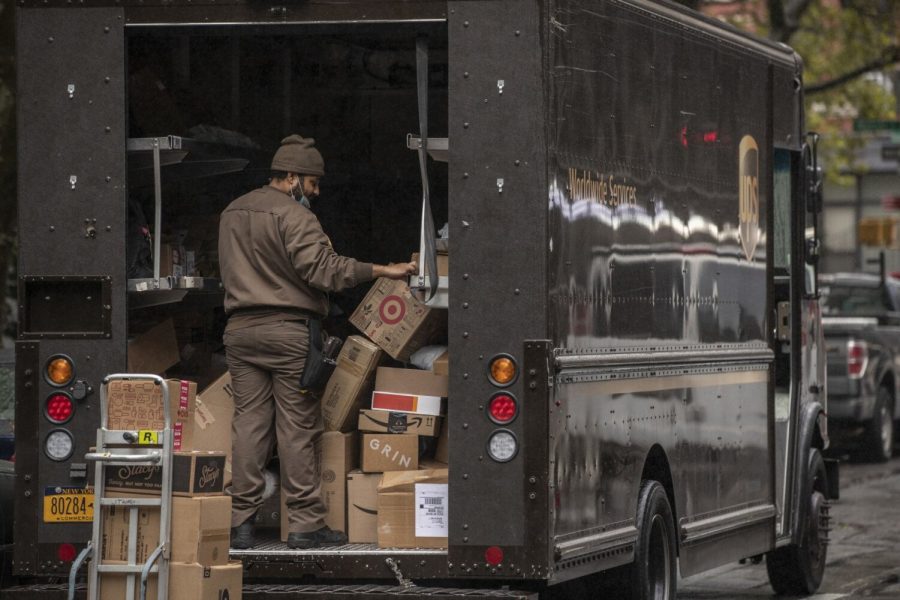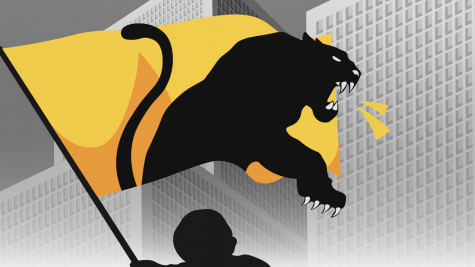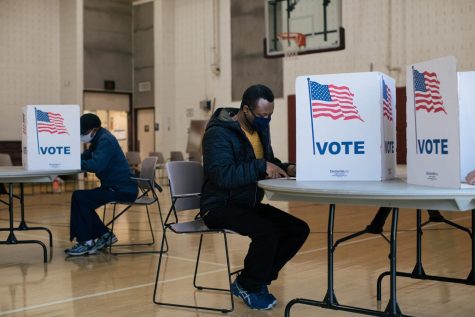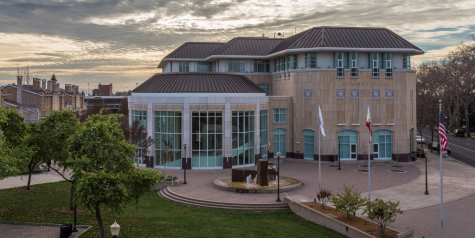What’s the Hold-up: American shipping crisis
November 17, 2021
The shipping crisis and how it affects you
Many of us have seen the headlines, “Backlog of cargo ships at southern California ports reaches an all-time high,” “Shipping containers can’t be emptied and refilled fast enough to keep up with demand,” but what exactly are they talking about?
The Port of Los Angeles that handles 30-40% of all incoming products into the United States, had to order ships to float along the coast rather than anchor, because all anchoring spots and berthing are full. This is an unprecedented request from the largest port in the U.S. and this level of backlog is currently taking place throughout the ports of entry into the nation.
This is due to unions performing their duty to protect workers too well and leading to harbors and ports having to follow too many safety regulations, according to Libertarian Think-Tank the Cato Institute.
The crisis is caused in large part due to the inability of these massive ports of entry to handle the huge increase in demand caused by the COVID-19 pandemic. We all remember buying most of our goods through Amazon and the constant reports of delivery trucks emptying everything as people stayed home and ordered their basic necessities as well as their wants, as noted by Dr. Jed DeVaro, an Economics professor at California State University East Bay and many other news sources.
“I expect the consequence for the average consumer will be higher and higher prices for consumer goods,” DeVaro continued.
This massive increase in demand has ensured that there are not enough shifts at these ports to handle the load of production being churned out from across the world. According to the Guardian, there is a backlog of ships over twelve months old now being processed.
These months-long backlogs will likely force this shipping crisis to extend deep into 2022 as ships have been waiting for so long to be processed and more arrive. Other issues revolve around the fact that the shortage of labor in these ports means that the shipping containers cannot be returned to the site of production, leading to products waiting to even begin traveling.
On top of this, the U.S. is facing either a shortage of truck drivers or a scant show of working conditions that would incentivize these drivers to take jobs as of right now. According to the Washington Post, this is all linked due to a lack of communication between different ports, as well as to the rest of the links down the supply chain, therefore people are not ready for when the product needs to be loaded onto a truck or a train.
The entire American infrastructural system is jam-packed with too many individual choices being made, rather than oversight being provided to ensure efficiency. According to CNN, Secretary of Transportation, Pete Buttigieg, said that the best way to alleviate the length of this crisis is for the 1.7 trillion dollar infrastructure bill to be passed, which was in early November.
But what does all of this mean for the consumer? We still want these things that are held up in port and on trucks. Plus, the holiday season begins about a week from now, can we not buy anything on Black Friday or Cyber Monday?
Essentially, yes. This supply shortage means that the cost of goods and products will continue to rise, there is no more waiting for the shipping cost to drop. This also means massive delays in orders and likely even shortages of the goods themselves from the sellers we all use. The rising cost of gas, the need to hire more dock workers and truckers, all of this cost will be passed on to the consumers.
However, there is an end in sight. Because this is likely caused by the pandemic and issues with the infrastructural system that is now being resolved, this means that we will be seeing sellers utilizing “the higher prices will themselves amplify people’s incentives to quickly find a solution to the shipping crisis,” according to DeVaro.
Knowing this will carry on into 2022, I’d get used to going without certain wants for a long time, because who knows when it will get to you or how much it will cost. But, those wants will be available in the near future, with a fully functioning infrastructural system and a nation free from the COVID-19 pandemic.
















